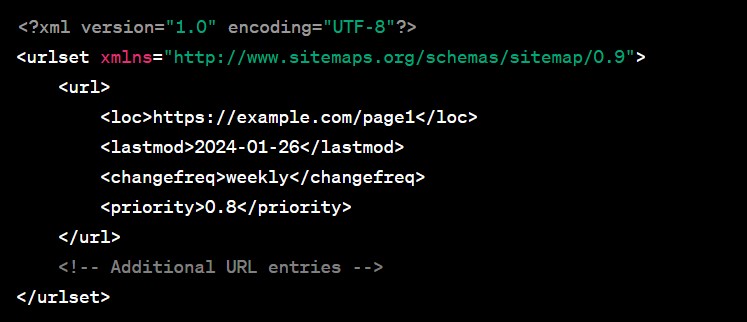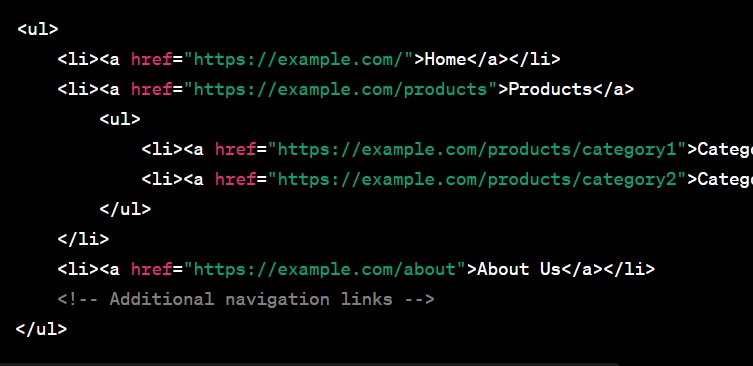Navigating the expansive realm of ecommerce requires a strategic approach to website organization and visibility. In this context, the role of ecommerce sitemaps cannot be overstated. An ecommerce sitemap serves as the blueprint for your online store, facilitating seamless navigation for both users and search engines.
Crafting and implementing effective sitemaps is a fundamental best practice that can significantly impact the user experience, enhance search engine optimization (SEO), and ensure the comprehensive indexing of your product pages. In this article, we dive into key strategies to optimize both XML and HTML sitemaps, providing a roadmap for online retailers to elevate their websites to new heights of accessibility and discoverability.
If you’re interested in learning what Summit Scout has to offer when it comes to organic SEO services, learn more here!
Ecommerce Sitemap: What It Is & Why It’s Important
An ecommerce sitemap is a file or page on a website that provides a structured and organized list of all the pages, products, and content available on that ecommerce site. It serves as a roadmap for search engines and website visitors, helping them navigate through the site’s hierarchy and understand its structure.
Here are the key aspects of an ecommerce sitemap and why it’s important:
- Structure and Organization: Facilitates Navigation: A well-organized sitemap makes it easier for visitors to navigate the website. It provides a clear structure of categories, subcategories, and individual product pages.
- SEO Benefits: Search Engine Crawling: Search engines use sitemaps to crawl and index a website’s content. A well-structured sitemap can help search engines discover and index all relevant pages, ensuring that your products and content are more likely to appear in search engine results.
- Improved User Experience: Enhanced User Navigation: Visitors can quickly find the products or information they are looking for, leading to a better user experience. This can contribute to increased engagement and conversions.
- Indexing Content: Ensures Inclusion: By providing a sitemap, you ensure that all important pages are included in search engine indexes. This is crucial for making your products and content discoverable online.
- Changes and Updates: Quick Updates: When new products are added or existing ones are updated, the sitemap helps search engines identify these changes efficiently. This is particularly important for keeping search engine results accurate and up to date.
- Mobile-Friendly Considerations: Responsive Design: In today’s mobile-centric landscape, it’s crucial to ensure that the sitemap is accessible and user-friendly on various devices, including smartphones and tablets.
In summary, an ecommerce sitemap plays a vital role in optimizing both the user experience and the site’s visibility on search engines. It serves as a valuable tool for search engine optimization (SEO), helping to ensure that your ecommerce site is effectively crawled, indexed, and presented in search results.
Types of Ecommerce Sitemaps
There are primarily two types of sitemaps related to ecommerce websites: XML Sitemaps and HTML Sitemaps. Each serves a different purpose and is used for specific functionalities:
XML Sitemap
-
- Purpose: Primarily designed for search engines.
- Format: XML (eXtensible Markup Language).
- Content:
- Lists URLs of the website along with additional metadata such as the last update date, change frequency, and priority.
- Provides search engines with information about the structure of the site and how often different sections are updated.
- Usage:
Submitted to search engines (e.g., Google Search Console, Bing Webmaster Tools) to help search engine crawlers discover and index pages efficiently.
- Example:

HTML Sitemap
-
- Purpose: Designed for website visitors to navigate through the site easily.
- Format: HTML (Hypertext Markup Language).
- Content:
-
-
- A visual representation of the site’s structure, often organized hierarchically.
- Contains clickable links to various sections, categories, and individual product pages.
- Usage:
- Linked in the footer or another accessible area of the website for users to find and navigate through different pages.
- Enhances the user experience by providing an overview of the site’s structure.
-
- Example:

Both XML and HTML sitemaps contribute to a well-organized and accessible ecommerce website. XML sitemaps cater to search engines, ensuring effective crawling and indexing, while HTML sitemaps enhance the user experience by providing a navigational aid for human visitors. It’s common for larger ecommerce sites to implement both types of sitemaps to address the needs of search engines and users simultaneously.
6 Steps to Create a Sitemap for an Ecommerce Website
Creating a sitemap for an ecommerce website involves generating both an XML sitemap for search engines and an HTML sitemap for users. Below are steps you can follow to create both types of sitemaps:
1. XML Sitemap
- Manually Create XML Sitemap:
-
- Open a text editor (e.g., Notepad, Visual Studio Code).
- Write XML code to represent your sitemap. Include URLs, last modification date, change frequency, and priority for each page.
- Save the file with a “.xml” extension.
- Use a Sitemap Generator Tool:
Several online tools and plugins can automatically generate XML sitemaps for your ecommerce website. Some popular options include:
- Google Search Console
- Yoast SEO (WordPress)
- Screaming Frog SEO Spider
2. HTML Sitemap
- Manually Create HTML Sitemap:
-
-
- Create an HTML file using a text editor.
- Structure the HTML file to represent the hierarchy of your ecommerce website.
- Include clickable links for each section, category, and product page.
- Save the file with a “.html” extension.
-
- Use a CMS or Platform:
If your ecommerce site is built on a Content Management System (CMS) or platform like WordPress, Shopify, or Magento, there might be plugins or built-in features that automatically generate HTML sitemaps.
3. Implementation
- XML Sitemap:
-
-
- Upload the XML sitemap to your website’s root directory.
- Submit the XML sitemap to search engines via their respective webmaster tools (e.g., Google Search Console, Bing Webmaster Tools).
-
- HTML Sitemap:
-
- Link the HTML sitemap in a prominent location on your website, such as the footer or a dedicated “Sitemap” page.
- Ensure the HTML sitemap is easily accessible to users.
4. Update and Maintain
- Regularly update both the XML and HTML sitemaps to reflect changes in your ecommerce site, such as new product additions or updates.
- Keep an eye on search engine guidelines and update the XML sitemap accordingly.
5. Consider Mobile Devices
- Ensure that your sitemaps are mobile-friendly to cater to users on smartphones and tablets.
6. Verify in Google Search Console
- If using Google Search Console, verify and monitor your XML sitemap’s performance and indexing status.
Important Tips:
- Follow SEO Best Practices: Ensure that the URLs in your sitemap follow SEO best practices, including using descriptive and keyword-rich URLs.
- Test Links: Regularly test the links in your sitemaps to identify and fix any broken links.
By creating and maintaining both XML and HTML sitemaps, you contribute to a better user experience and help search engines crawl and index your ecommerce website efficiently.
Building Your SEO Strategy with Summit Scout
In conclusion, implementing best practices for ecommerce sitemaps is pivotal for enhancing both the user experience and the visibility of your online store in search engine results. By meticulously creating and maintaining XML and HTML sitemaps, you provide clear navigational paths for users and ensure that search engines can efficiently crawl and index your website.
Interested in building your ecommerce business and SEO strategy? Consider working with Summit Scout! We can help build your SEO strategy from the ground up with our organic SEO services. Learn more about how you can get started today!
